-
 Bitcoin
Bitcoin $118300
-0.58% -
 Ethereum
Ethereum $3825
0.11% -
 XRP
XRP $3.137
-0.71% -
 Tether USDt
Tether USDt $0.9999
-0.01% -
 BNB
BNB $803.9
-3.37% -
 Solana
Solana $181.5
-1.94% -
 USDC
USDC $0.9999
0.01% -
 Dogecoin
Dogecoin $0.2238
-2.51% -
 TRON
TRON $0.3358
2.12% -
 Cardano
Cardano $0.7844
-2.16% -
 Hyperliquid
Hyperliquid $43.31
-1.48% -
 Sui
Sui $3.807
-4.04% -
 Stellar
Stellar $0.4203
-1.96% -
 Chainlink
Chainlink $17.79
-3.00% -
 Bitcoin Cash
Bitcoin Cash $567.8
-1.34% -
 Hedera
Hedera $0.2614
-4.30% -
 Avalanche
Avalanche $24.19
-4.46% -
 Litecoin
Litecoin $109.2
-0.74% -
 UNUS SED LEO
UNUS SED LEO $8.969
-0.01% -
 Toncoin
Toncoin $3.404
3.97% -
 Ethena USDe
Ethena USDe $1.001
-0.01% -
 Shiba Inu
Shiba Inu $0.00001307
-3.19% -
 Uniswap
Uniswap $10.33
-1.23% -
 Polkadot
Polkadot $3.884
-4.06% -
 Monero
Monero $312.9
-1.87% -
 Dai
Dai $1.000
0.01% -
 Bitget Token
Bitget Token $4.537
-2.24% -
 Pepe
Pepe $0.00001156
-3.40% -
 Cronos
Cronos $0.1437
-0.89% -
 Aave
Aave $282.8
-2.77%
How to sell CVX coins safely
Selling CVX coins involves creating an account on a secure cryptocurrency exchange, setting up two-factor authentication, depositing coins into the account, placing a sell order specifying the amount and desired price, monitoring the order status, and withdrawing funds to a personal wallet upon execution.
Nov 21, 2024 at 09:56 pm

How to Sell CVX Coins Safely
1. Open an Account on a Cryptocurrency Exchange
To sell your CVX coins, you will first need to create an account on a cryptocurrency exchange such as Binance, Coinbase, or Kraken. These exchanges provide a platform for buyers and sellers to trade cryptocurrencies, including CVX. It is important to do your research to know the user interface. Be sure to use a reputable exchange that has a good track record of security and customer service.
2. Set Up Two-Factor Authentication
Once you have created an account on a cryptocurrency exchange, you should set up two-factor authentication (2FA). This will add an extra layer of security to your account by requiring you to enter a code sent to your phone or email address. It will minimize the risk that your account will be hacked or compromised.
3. Deposit Your CVX Coins into Your Exchange Account
Once you have set up your account, you will need to deposit your CVX coins into your exchange account. To do this, you will need to generate a deposit address from your exchange account. Once you have generated the deposit address, you can send your CVX coins to the address. Here are the detailed steps:
- Log in to your exchange account and click on the "Deposit" tab.
- Select "CVX" from the list of cryptocurrencies.
- Copy the deposit address that is displayed.
- Go to your cryptocurrency wallet and send your CVX coins to the deposit address.
4. Place a Sell Order
Once your CVX coins have been deposited into your exchange account, you can place a sell order. A sell order is an instruction to the exchange to sell your CVX coins at a specific price. When you place a sell order, you will need to specify the following information:
- The number of CVX coins you want to sell.
- The price you want to sell your CVX coins at.
- The type of order you want to place. There are two main types of orders: market orders and limit orders. A market order is an order to sell your CVX coins at the current market price. A limit order is an order to sell your CVX coins at a specific price or better.
5. Monitor Your Order
Once you have placed a sell order, you can monitor it to see its status. You can track the status of your order by following its progress in the "Orders" tab of your exchange account. If you have placed a limit order, you can cancel it if the price of CVX does not reach your desired price.
6. Withdraw Your Funds
Once your sell order has been executed, you can withdraw your funds from your exchange account. To do this, you will need to provide the exchange with the address of your cryptocurrency wallet. Once you have provided the exchange with the address of your cryptocurrency wallet, the exchange will send your funds to the address.
Disclaimer:info@kdj.com
The information provided is not trading advice. kdj.com does not assume any responsibility for any investments made based on the information provided in this article. Cryptocurrencies are highly volatile and it is highly recommended that you invest with caution after thorough research!
If you believe that the content used on this website infringes your copyright, please contact us immediately (info@kdj.com) and we will delete it promptly.
- PENGU Price Plunge? Binance Transfers and Token Transfer Trends
- 2025-07-30 23:10:15
- Navigating Crypto Investment: Bitcoin Mining and the Rise of Cloud Mining in the Big Apple
- 2025-07-30 22:31:15
- Meme Coins, Profit, and Investment: Riding the Crypto Wave in Style
- 2025-07-30 23:10:15
- LivLive's Gamified AR Launch Phase: Level Up Your Reality!
- 2025-07-30 22:31:15
- Bitcoin, Crypto, and the Golden Age: Navigating the Future of Digital Assets
- 2025-07-31 00:10:14
- JPMorgan, Coinbase, and Crypto Access: A New Era for Digital Finance?
- 2025-07-30 22:50:13
Related knowledge
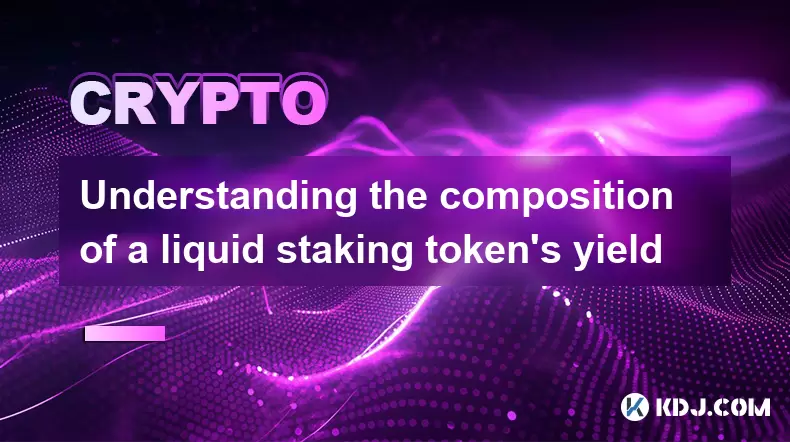
Understanding the composition of a liquid staking token's yield
Jul 20,2025 at 09:07am
What Is a Liquid Staking Token?A liquid staking token is a representative asset issued to users who stake their native cryptocurrency on a proof-of-st...
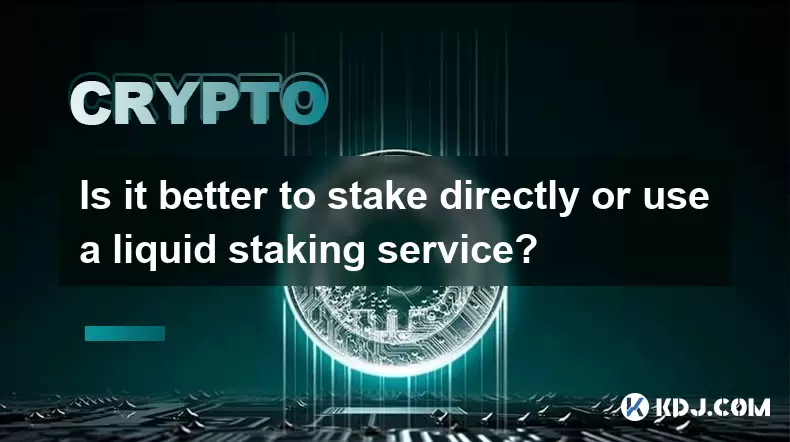
Is it better to stake directly or use a liquid staking service?
Jul 22,2025 at 08:21pm
Understanding the Basics of StakingStaking in the context of blockchain and cryptocurrency refers to the process of locking up digital assets to suppo...

What to do during an LST depeg event
Jul 20,2025 at 04:57pm
Understanding LST Depeg EventsAn LST (Liquid Staking Token) depeg event occurs when the token, which is typically pegged to the value of the underlyin...
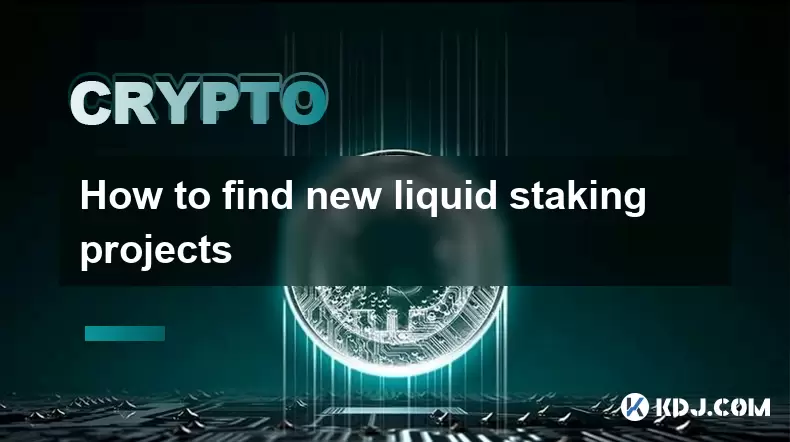
How to find new liquid staking projects
Jul 30,2025 at 01:14pm
Understanding Liquid Staking and Its ImportanceLiquid staking is a mechanism that allows users to stake their cryptocurrency assets while still mainta...
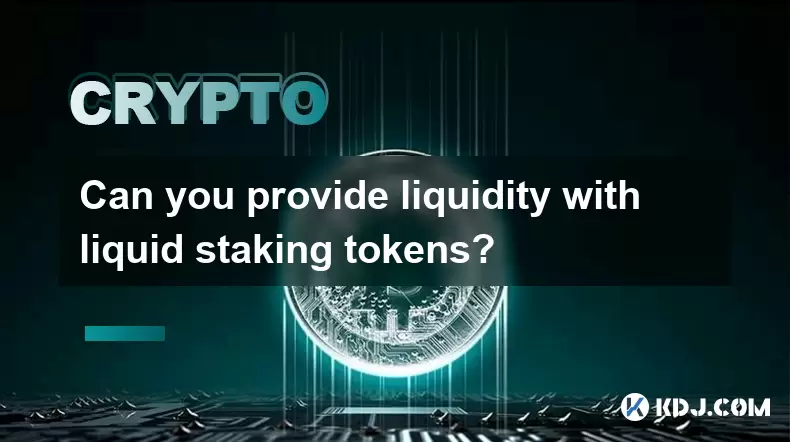
Can you provide liquidity with liquid staking tokens?
Jul 22,2025 at 10:22am
Understanding Liquid Staking TokensLiquid staking tokens (LSTs) are derivative tokens that represent staked assets on a proof-of-stake (PoS) blockchai...
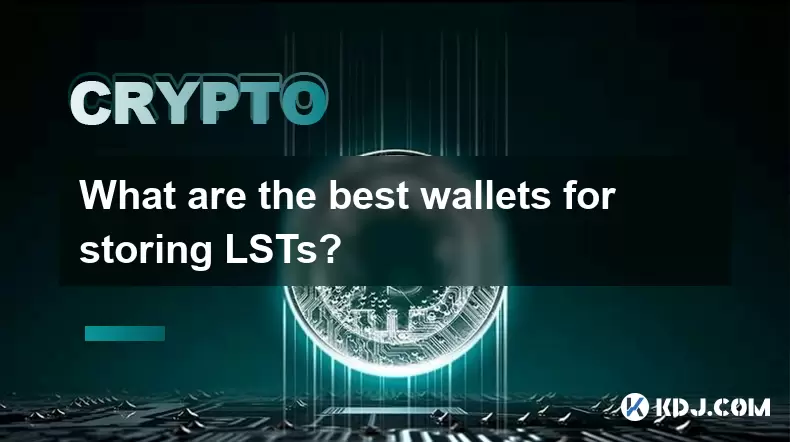
What are the best wallets for storing LSTs?
Jul 21,2025 at 03:14pm
Understanding LSTs and the Need for Secure StorageLSTs, or Liquid Staking Tokens, are derivative tokens representing staked assets on a blockchain. Wh...

Understanding the composition of a liquid staking token's yield
Jul 20,2025 at 09:07am
What Is a Liquid Staking Token?A liquid staking token is a representative asset issued to users who stake their native cryptocurrency on a proof-of-st...

Is it better to stake directly or use a liquid staking service?
Jul 22,2025 at 08:21pm
Understanding the Basics of StakingStaking in the context of blockchain and cryptocurrency refers to the process of locking up digital assets to suppo...

What to do during an LST depeg event
Jul 20,2025 at 04:57pm
Understanding LST Depeg EventsAn LST (Liquid Staking Token) depeg event occurs when the token, which is typically pegged to the value of the underlyin...

How to find new liquid staking projects
Jul 30,2025 at 01:14pm
Understanding Liquid Staking and Its ImportanceLiquid staking is a mechanism that allows users to stake their cryptocurrency assets while still mainta...

Can you provide liquidity with liquid staking tokens?
Jul 22,2025 at 10:22am
Understanding Liquid Staking TokensLiquid staking tokens (LSTs) are derivative tokens that represent staked assets on a proof-of-stake (PoS) blockchai...

What are the best wallets for storing LSTs?
Jul 21,2025 at 03:14pm
Understanding LSTs and the Need for Secure StorageLSTs, or Liquid Staking Tokens, are derivative tokens representing staked assets on a blockchain. Wh...
See all articles

























































































